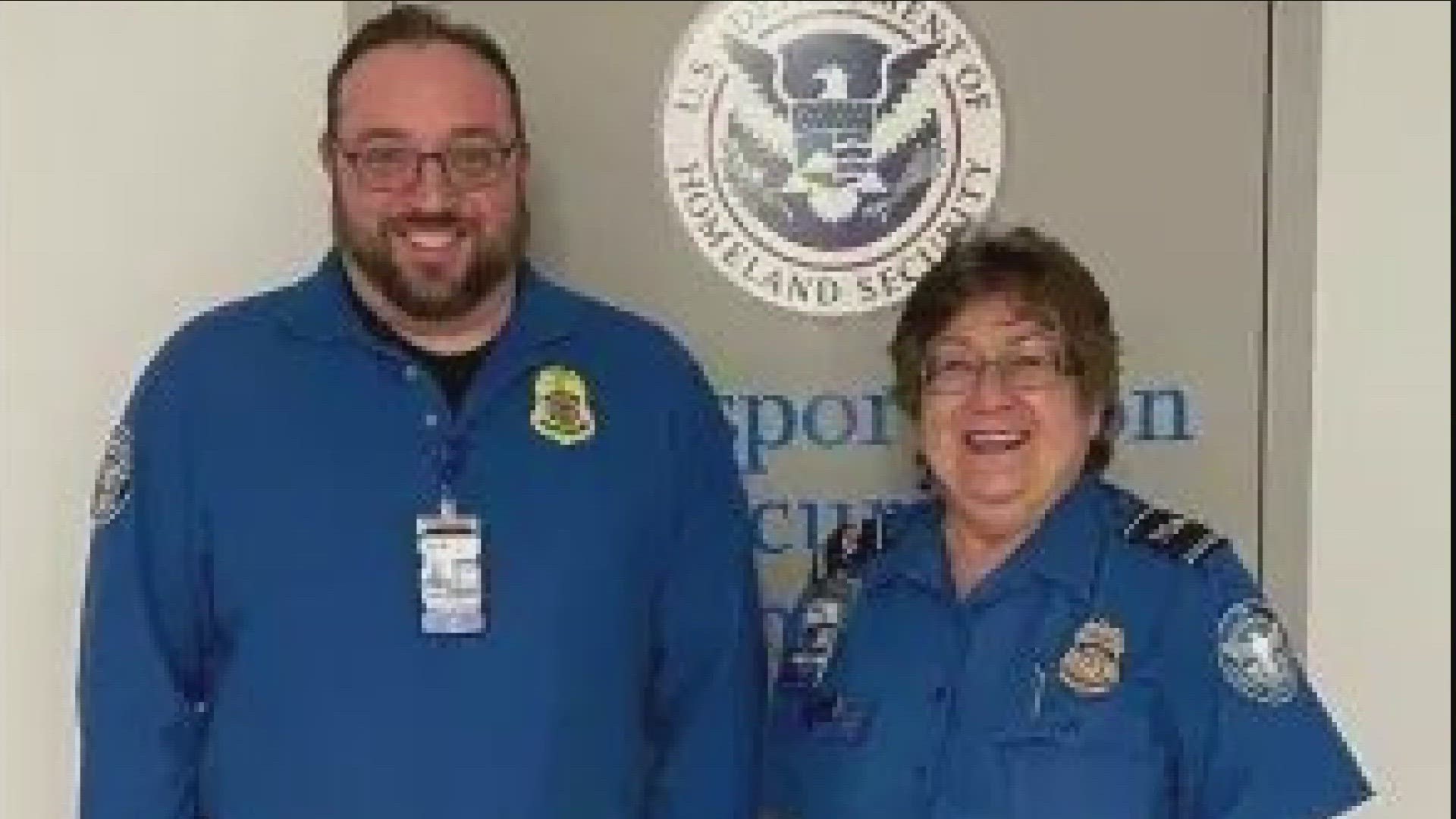BUFFALO, N.Y. — A Transportation Security Administration agent at the Buffalo airport is being credited with saving the life of a co-worker.
His actions also provide a reminder of how we can all learn the skills needed to help someone in distress.
"Instinct took over and it was just like, OK, someone has to do something," recalled TSA Supervisory Officer William Brand, regarding the action he took when he noticed his fellow TSA Officer Marie Benny in the break room, struggling to breath after consuming some granola.
"Someone said to pat her on the back, but I'm like, that's not going to do anything if someone is choking, so I did the Heimlich maneuver as best I knew how to do it," Brand said.
A few abdominal thrusts later, the food was displaced enough to allow Marie Benny to breath again.
Brand has been a TSA officer for 13 years but it was in his previous job, as a mall security guard, where he was instructed on the Heimlich maneuver.
"It's something you never even think about having to do," said Brand, who noted that in the approximately 15 years since he was instructed on it, he never had occasion to deploy the Heimlich.
You can learn to save lives
"Believe it or not that's a common story," said Michael Derme, program director of Buffalo CPR and Continuing Education, which teaches a host of life saving skills, including the Heimlich, at courses offered to the public several times a month.
Derme says he's heard from several people whose training in CPR, First Aid, or other life-saving skills were taught to them decades ago, and for whom it comes back in an instant when needed.
Regarding the Heimlich, which agencies like his formally refer to as the abdominal thrust technique, it's something almost anyone, even children, can learn.
"It's relatively simplistic. I think the big issue is people are nervous or afraid to do it, and training will give you the confidence to perform this skill and save a life," he said.
"More people than ever are actually learning this skill. Still, we're not even close to 50 percent of our population. That would be a wonderful goal, so I think there's still a lot of training to do out there."
"It was something that in the moment I did," Brand said. "I was very glad it worked, and hopefully I won't have to do it again."

